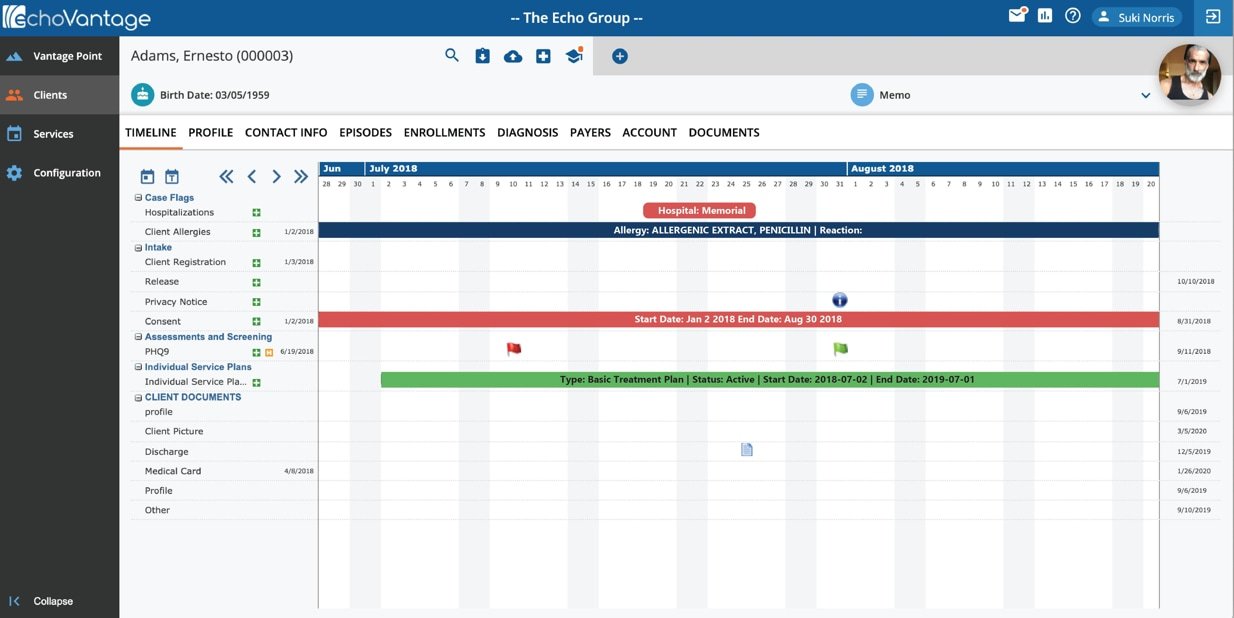Too Many SUD Assessments When I Only Need One
In the last article, “What is A Substance Use Assessment,” we addressed the definition of the SUD Assessments and explained their value. In this article, we take a look at the various assessments through descriptions and screenshots.
Remind Me What is an SUD Assessment
There are generally two steps of a substance use assessment. The first step is Screening. Screening is the first evaluation to determine if SUD exists or if the problem of SUD is likely to exist. Sometimes the Screenings are made easier with signs such as drunk driving stops or positive screening tests. Clients receive the assessment when the screening indicates the possibility of SUD, through history or due to one or more clinical findings.
How Many Assessments Are There?
The Addictions, Drug & Alcohol Institue of the University of Washington provides a site that lists screenings and assessments. You can filter the list only to see widely used measures with proven reliability. When the filter is applied, there are 21 screenings and 44 assessments. There are plenty of assessments to allow any state, county, agency, or provider to find at least one of two to work with. And then, there are the screenings that different providers and non-profits put on their website, such as the 12 questions available on the alcoholics anonymous website. Even the world health organization released a screening tool, The Alcohol Smoking, and Substance Involvement Screening Test.
So What Assessment is Right For Me?
We know that screenings are self-administered or administered by a clinician. Let’s look at the self-administered type from the Alcoholics Anonymous website. 12 questions require a yes or no response:
1) Have you ever decided to stop drinking for a week or so, but only lasted for a couple of days?
2) Do you wish people would mind their own business about your drinking– stop telling you what to do?
3) Have you ever switched from one kind of drink to another in the hope that this would keep you from getting drunk?
4) Have you had to have a drink upon awakening during the past year?
5) Do you envy people who can drink without getting into trouble?
6) Have you had problems connected with drinking during the past year?
7) Has your drinking caused trouble at home?
8) Do you ever try to get “extra” drinks at a party because you do not get enough?
9) Do you tell yourself you can stop drinking any time you want to, even though you keep getting drunk when you don’t mean to?
10) Have you missed days of work or school because of drinking?
11) Do you have “blackouts”?
12) Have you ever felt that your life would be better if you did not drink?
When you finish the 12 questions, you can click on see results which provide a general result. If you answered four or more questions, yes, you are told you probably have a problem with alcohol. This type of assessment and result is available on many websites. Such assessments provide a set of questions for people or loved ones who suspect an addiction problem, and they do not necessarily have proven reliability. However, as we look at standard screening and assessment tools, you may see a similarity in the question. An example of a standard screening tool is the Alcohol Use Disorder Identification Test or AUDIT. The AUDIT contains ten questions administered by the clinician.
While the questions may look similar, the AUDIT has wide usage and has proven reliability.
So What About the Rest of the 65 Tools?
Often your State will determine the appropriate instrument to use. States with an 1115 waiver are required to identify an evidence-based SUD patient assessment tool within 12-24 months of approval of the waiver. Idaho does not require a specific assessment but requires that the six domains of the ASAM be part of any selected assessment. The dimensions include:
- Dimension 1 – Acute Intoxication and/or Withdrawal Potential o
- Dimension 2 – Biomedical Conditions and Complications
- Dimension 3 – Emotional, Behavioral, or Cognitive Conditions and Complications
- Dimension 4 – Readiness to Change
- Dimension 5 – Relapse, Continued Use, or Continued Problem Potential
- Dimension 6 – Recovery/Living Environment
Minnesota requires specific screenings, the CRAAFT for persons 12-18 and the CAGE for adults over 18. An example CAGE follows.
These are just a few of the examples of the 21 evidence-based screenings.
Assessments are also required, and while generally not specifically identified at the State level, we did see above the requirement that the assessments capture the six domains. One of the most used assessment instruments is the ASI. It serves many different purposes in assessing substance abuse clients: a) to assess the problem severity of the client, and b) for periodically repeated administrations to monitor and quantify the change in problems commonly associated with substance abuse. The ASI includes multiple dimensions to develop a problem grid: medical, employment and support, alcohol, drug, legal, family and social relationships, and psychiatric. A sample first screen from EchoVantage follows:
The 44 evidence-based assessments address multiple addictions, including alcohol, drugs, gambling, smoking, and related PTSD,
What About SBIRT?
Primary care physicians will first ask a question about alcohol use and drug use. If the responses are concerning, the next step is to complete the AUDIT assessment. Based on the responses, the medical doctor may refer the client to treatment. Remember, the SBIRT requires a screening (the AUDIT), brief intervention, and referral to treatment.
What About Mental Health Diagnoses?
About 50% of persons diagnosed with SUD will also have a co-occurring mental health disorder. Clinicians use the assessments discussed above to diagnose SUD, so what about the co-occurring mental health disorder? How is that diagnosed? There is no one way to diagnose a mental health disorder. It depends on the preference of the clinician and the nature of the mental health disorder. The PHQ -9 is widely used and has proven reliability for depression screening. The GAD-7 provides a tool to diagnose anxiety and has reliability and wide usage. Providers may want assessments for suicidality, PTSD, or other mental health disorders, and there are several reliable assessments. Examples include the Columbia Suicide Severity Rating Scale and the UCLA PTSD assessments. To help better describe these assessments, screenshots from EchoVantqage follow:
PHQ-9
GAD-7
Example Screen from the CSSRS (Columbia Suicide Severity Rating Scale)
Example from the UCLA PTSD Self Report
While many more assessments are available to providers to determine co-occurring disorders, these are just a few examples.
The BioPsychosocial
The provider might like, and payers may require a comprehensive biopsychosocial assessment as part of the intake process. Payers may expect the biopsychosocial to prove medical necessity for the suggested treatment. The biopsychosocial also gives the provider details about the whole person requiring treatment. EchoVantage provides an example of a comprehensive biopsychosocial. The first screenshot is the opening screen to the assessment, and the second is the screen where a user enters alcohol, drug and mental health information.
Final Thoughts
The importance of diagnosing SUD online, in a therapist’s office, or when visiting your PCP may be the difference between living with the disease or living in recovery. These assessments have one purpose of helping the client identify, treat and stay sober. As Martin Luther King Jr. said, “Faith is taking the first step even when you don’t see the whole staircase.”



